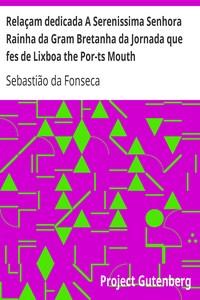|
|
Read this ebook for free! No credit card needed, absolutely nothing to pay.Words: 12991 in 3 pages
This is an ebook sharing website. You can read the uploaded ebooks for free here. No credit cards needed, nothing to pay. If you want to own a digital copy of the ebook, or want to read offline with your favorite ebook-reader, then you can choose to buy and download the ebook.

: Biblia Sacra Vulgata - Psalmi XXII by Anonymous - Bible. Psalms Christianity@FreeBooksTue 06 Jun, 2023 PAGE PREFACE ix THE TUN-HUANG PAINTINGS AND THEIR PLACE IN BUDDHIST ART An Introductory Essay by Laurence Binyon 1-10 INDEX 64 But throughout it is Buddhist inspiration and legend, as propagated by the Mah?y?na system of Buddhism in Central and Eastern Asia, which furnish the themes of these paintings and determine the presentation of individual figures and scenes in them. For the proper appreciation of their art some knowledge of the traditional elements in subjects and treatment is indispensably needed. It has hence been my aim in the descriptive text referring to each Plate to supply such iconographic information as the non-specialist student may need for the comprehension of the subject and details, and as the present state of our researches permits to be safely offered. In the same descriptive notes I have endeavoured to record information also as to the state of preservation, character of workmanship, colouring, and similar points in each painting. The mixture of influences already referred to revealed itself plainly in features directly derived from Graeco-Buddhist art and in marks of the change it had undergone on its passage through Central Asia or Tibet. But the preponderance of Chinese taste and style was all the same unmistakable from the first. On the iconographic side, too, it soon became clear that the varied imagery displayed by the paintings, though based on Indian conceptions and forms, bore the impress of important changes undergone on its transition to China and after its adoption there. The chief hope of guidance for the interpretation of this Pantheon lay manifestly in comparison with the artistic creations of the later Mah?y?na Buddhism of the Far East, especially of Japan, and in the Chinese inscriptions displayed by many of the silk paintings. It was obvious hence that for this part of my collection a collaborator was needed who with knowledge of Buddhist iconography would combine the qualifications of a Sinologue as well as familiarity with Far-Eastern art in general. For these and cognate reasons I had been anxious from the outset to arrange for a separate publication like the present. But the attempts made in this direction before my return to duty in India at the close of 1911 failed from want of needful means, and subsequently distance and absorbing exertions in the field, as implied by my third Central-Asian expedition , precluded their effective renewal. That auspices proved more favourable on my return from that journey was due mainly to the generous interest which a far-sighted statesman, the Right Honourable Mr. Austen Chamberlain, then H.M. Secretary of State for India, was pleased to show in the plan. His appreciation of the importance of these pictorial treasures and of the need of securing an adequate record of them before their impending division between the British Museum and Delhi was largely instrumental in inducing the authorities of the India Office, with the ready co-operation of the Trustees of the British Museum, to sanction the present publication at a cost not exceeding ?1,900. Regard for the special difficulties then prevailing owing to the war is an additional reason for Mr. Chamberlain's timely help being remembered by me with profound gratitude. AUREL STEIN. Camp, Mohand Marg, Kashmir. June 2, 1921. Seven of those in the latter work have, with the kind permission of the Delegates of the Clarendon Press, been used also here. THE TUN-HUANG PAINTINGS AND THEIR PLACE IN BUDDHIST ART AN INTRODUCTORY ESSAY BY LAURENCE BINYON In March 1907 Sir Aurel Stein's expedition, which had left Kashmir in April of the preceding year, arrived at Tun-huang. From K?shgar the travellers had proceeded to Y?rkand; thence to Khotan, where Sir Aurel on his previous journey in 1900-1 had disinterred such interesting remains of the ancient civilization once flourishing in that region; thence eastward along the southern skirts of the great desert, exploring various sites by the way with rich results, till at Tun-huang they found themselves at last within the western border of the Chinese province of Kan-su. Free books android app tbrJar TBR JAR Read Free books online gutenberg More posts by @FreeBooks
: Beyond Good and Evil by Nietzsche Friedrich Wilhelm Zimmern Helen Translator - Ethics; Philosophy German Philosophy; Atheism@FreeBooksTue 06 Jun, 2023

: Beowulf by Gummere Francis Barton Translator - Epic poetry English (Old); Monsters Poetry; Dragons Poetry; Scandinavia Poetry@FreeBooksTue 06 Jun, 2023
|
Terms of Use Stock Market News! © gutenberg.org.in2025 All Rights reserved.






